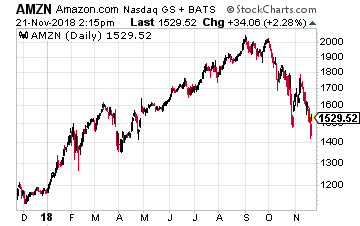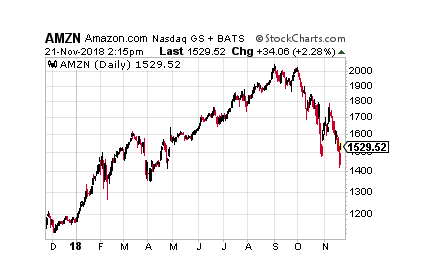Despite the recent Grinch of a market, retail sales this holiday season are expected to rise almost 5% over last year. A report on holiday spending by PWC says 84% of consumers will spend the same or more than they did last year, with individuals expected to spend $1,250 on average.
The largest increases in spending are coming from high earning millennials (those making over $70K are expected to ramp holiday spending to over $2K) on the holiday and consumers in metropolitan areas, while those predicted to spend the least are those living in small towns and individuals with incomes under $25K.
The Haves and the Have Nots
PWCs numbers, though focused on the 2018 holiday season, mirror a major shift that has been developing in the retail sector for several years now. In 2015, then Hershey CEO John Bilbrey, told investors that “consumer bifurcation” was an important driver in the company’s strategy.
Hershey was facing a market in which low-income consumers wanted discounted products, and high-end consumers wanted higher priced, and at least perceived higher quality, specialty items. The middle class, its traditional go-to market, was disappearing.
Since 1971 the percent of U.S. aggregate income held by the middle class has declined every year while the size of the pie for upper-income earners has steadily increased. In 2015 the share of aggregate income received by the middle-class dropped below 50% for the first time.
The income inequality trend is not only a U.S. issue either. The World Economic Forum has called the widening income disparity “one of the key challenges of our time.” Economists from the Paris School of Economics and Cal-Berkley say the top 1% of earners in China have seen their income rise from 6% of total income in 1978 to 12% in 2017.
Leaving the causes of the rising disparity aside, retailers are left with a choice. Move up the value chain and serve what Deloitte calls the “Premier” market, move down and serve the “Price-Based” market, or undertake the onerous task of serving both.
Blue Ocean, Red Ocean
A recent darling of the corporate strategy intelligentsia is a book by W. Chan Kim and Renee Mauborgne titled Blue Ocean Strategy. The main concept of the book is that as a business you should not compete in a red ocean where there are multiple competitors selling similar products, but in a blue ocean in which you can set your products or services apart from others.
It’s a sound and seemingly logical idea. What company in their right mind would want to enter a market and compete on price because your products are basically commodity items. I can’t think of one single company that would say that’s a good idea. Oh wait, there is that one company I saw in the news recently that has grown so large it needs a “H2”, or second headquarters. Maybe you’ve heard of them as well, I believe they’re named after a large rainforest located mainly in Brazil.
 Amazon (Nasdaq: AMZN) has made a living out of dominating the red ocean. The company now commands approximately 50% of retail business conducted online in the U.S. and 5% of ALL retail transactions in the U.S. According to Morgan Stanley, the company will surpass Walmart in 2018 as the country’s number one apparel retailer.
Amazon (Nasdaq: AMZN) has made a living out of dominating the red ocean. The company now commands approximately 50% of retail business conducted online in the U.S. and 5% of ALL retail transactions in the U.S. According to Morgan Stanley, the company will surpass Walmart in 2018 as the country’s number one apparel retailer.
To be fair, the red ocean of price-based retail is not all Amazon. There are other stalwart competitors there such as Walmart (NYSE: WMT), Target (NYSE: TGT), and Dollar General (NYSE: DG). Those companies have had decent performance numbers, because as the middle class has disappeared not only have the ranks of the upper-income grown, but the lower-income market has grown as well.
Deloitte puts the 5 year growth of the price-based market at 37%. But recent bankruptcies at Toys ‘R Us and Sears, and the closing of thousands of other retail stores in 2017 and ‘18, appear to indicate that the winners are becoming fewer and fewer.
With the low end dominated by Amazon and a handful of large retailers, I believe we should focus our search for growth companies in the Premier, or luxury, markets.
Buffett just went all-in on THIS new asset. Will you?Buffett could see this new asset run 2,524% in 2018. And he's not the only one... Mark Cuban says "it's the most exciting thing I've ever seen." Mark Zuckerberg threw down $19 billion to get a piece... Bill Gates wagered $26 billion trying to control it...
What is it?
It's not gold, crypto or any mainstream investment. But these mega-billionaires have bet the farm it's about to be the most valuable asset on Earth. Wall Street and the financial media have no clue what's about to happen...And if you act fast, you could earn as much as 2,524% before the year is up.
Click here to find out what it is.
